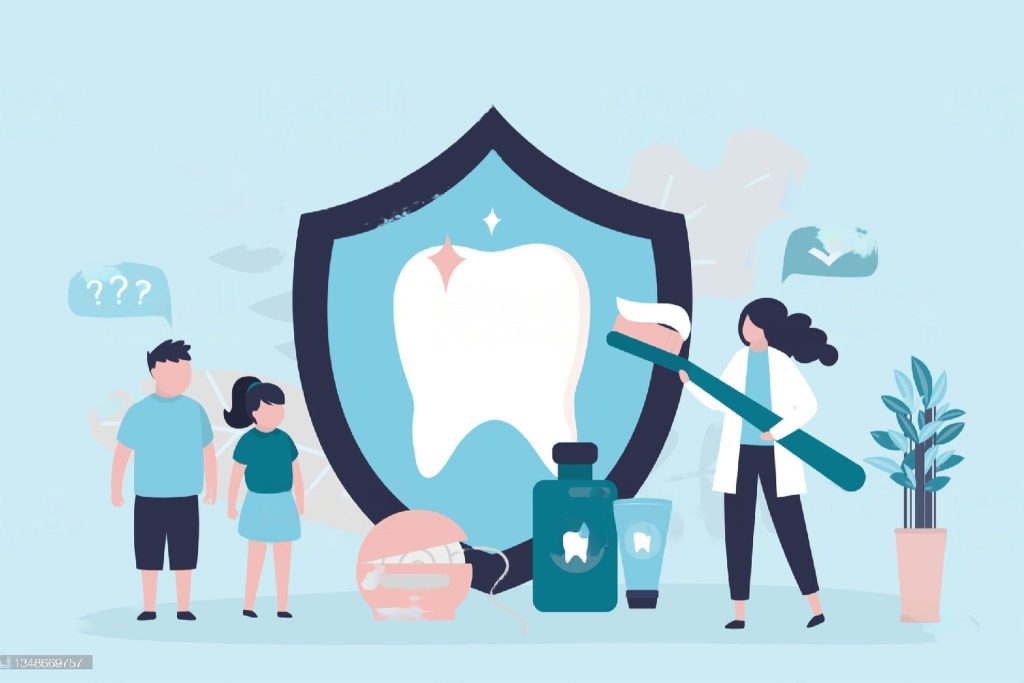What to do in an Emergency Dental Situation

With an increase in dental emergencies over the last decade there has never been a better time to discuss the topic. When a serious dental problem arises that requires your immediate attention, it’s often stressful and daunting to deal with. It’s best if you already Emergency Dentistryknow the best ways to cope with a dental emergency, so that you can be prepared for anything. Knocked-Out Tooth A knocked-out tooth can be a scary situation. Here is the best way to handle this emergency should it happen to you or someone you know: Gently rinse out of the tooth, being sure to only handle it by the crown and never the roots. Rinse out your mouth with warm water. If possible, try to place the tooth back into the socket. If this isn’t possible, either hold the tooth between your cheeks or place it in a container of milk. See your Queen Creek emergency dentist right away. A knocked out tooth can be saved if you seek treatment within an hour of the incident. Fractured Tooth While chips and cracks are a bit more obvious, most people won’t even be able to see that they have a fracture or break in their tooth. Pain is often the most common symptom of a fractured tooth. You may notice severe pain or sensitivity that comes and goes when chewing or releasing your bite. A fractured tooth will not heal on its own and it can’t be treated at home. You need to see your Queen Creek dentist right away. Here are some other steps you can take: Rinse your mouth out with warm water to remove any food particles or debris. If there is swelling or pain, use a cold compress or opt for over-the-counter pain medications to reduce your symptoms. If there is bleeding, apply pressure to the area for a few minutes with gauze or a towel. Broken Braces Damaged braces aren’t effective and can actually increase the length of treatment if not tended to right away. If a wire comes loose and is sticking out this could cut the gums or cheek. Try using the eraser end of a pencil to slowly and carefully push the wire back, then visit your Queen Creek dentist right away so we can replace the damaged wire. Bitten Cheek/Tongue A bleeding mouth is always a disconcerting. If you’ve bitten your tongue or cheek put a moist compress on the bite and apply pressure for a few minutes to stop the bleeding. If the bleeding doesn’t stop after 10 minutes or if it gets worse, then it’s time to take a trip to your local emergency room for care. If you are dealing with a dental emergency in Queen Creek let Ocotillo Trails Family Dentistry, PLLC handle any of your smile issues. Our goal is to preserve and protect your smile from permanent damage.
What is Causing My Tooth Pain?

It is hard to ignore any level of tooth pain that you may be experiencing. There is a multitude of reasons you may be experiencing tooth pain. While some tooth pain can resolve on its own, others may require a trip to an emergency dentist in San Tan Valley, AZ. When this is the case, trust Dr. Matthew Roper and his team at Ocotillo Trails Family Dentistry to identify the source of your tooth pain and administer the necessary treatment. Why Are Your Teeth Hurting? Here are some of the most common reasons for toothaches. You Have a Cavity/Decayed Tooth The most common reason for tooth pain is a cavity or decayed tooth. If you fail to maintain your oral hygiene habits daily, food particles and bacteria will increase the levels of acid in the mouth. As a result, the enamel will wear away on your teeth and cause cavities. Your teeth will become sensitive and vulnerable to even further infection (decay). Dr. Roper can perform an exam to determine the extent of the decay. You may like: Can Dental Procedures be Restored? You Have a Damaged Tooth If you have sudden, sharp pain that does not go away, you may have a physically damaged tooth. In other words, your tooth may have suffered a crack, fracture, chip, or other forms of damage. In some cases, this physical damage may be easy to notice, especially if it is a result of an accident; however, there are instances when it may be more difficult to notice and you’ll need an emergency dentist in San Tan Valley, AZ, like Dr. Roper, to identify the damage. You Are Grinding Your Teeth Some people will grind their teeth in their sleep and never realize they are doing it. Other people grind their teeth as a way to cope with anger and/or stress. Whatever the case may be, if you are grinding your teeth, it can cause serious damage to your oral health overall. An easy solution to stop your tooth pain and the damage is to have Dr. Roper set you up with a custom mouth guard to wear at night. You Have Receding Gums Your gums are designed to protect the nerves of your teeth. When your gums start to recede, those nerves end up getting exposed, resulting in tooth sensitivity and pain. Receding gums can result from numerous things, such as gum disease as well as hard brushing over an extended period of time. Dr. Roper will need to diagnose this underlying issue of your tooth pain. Don’t suffer in pain. Call (480) 457-1977 to schedule an appointment with Dr. Roper, our emergency dentist in San Tan Valley, AZ, here at Ocotillo Trails Family Dentistry. You may like: Can Dental Procedures be Restored?
Give Your Tooth a Second Chance

A decayed or damaged tooth isn’t a lost cause. Find out what we can do.root canal When you break or fracture a tooth you may just assume that the tooth will have to be removed. You may just ignore it thinking that if the problem is out of sight then it’s out of mind. Whatever you do, do not ignore these issues. Especially since our Sun Tan Valley, AZ, dentists – Dr. Matthew Roper, Dr. Nathan McLaws and Dr. Matthew Scheerhorn – offer up a simple and effective way to preserve the tooth for life. What are the benefits of root canal therapy? A root canal is a procedure in which we go through the hard outer layers of the tooth until we reach the inside. Once inside, we remove the infected or inflamed dental pulp that is causing all those painful issues. Most people come into our office complaining of a nagging, persistent toothache that just won’t go away. This is a classic sign of a damaged dental pulp that needs to be removed. By removing the dental pulp we can prevent the spread of infection, preserve the structure of the tooth and also eliminate your dental pain (isn’t that a relief?). During the procedure, we will also seal up the roots of your teeth to prevent bacteria from entering and infecting the tooth again. Plus, this procedure can easily be performed right here in our office in just one visit. You may like: Santan Teeth Whitening Wait, but isn’t a root canal painful? Contrary to what you might have been told, there are certainly a lot of myths circulating about root canal treatment but they simply aren’t accurate. In fact, if you ask any of our Sun Tan Valley family dentists they will tell you that getting a root canal is no more complicated or invasive than treating a cavity. Plus, root canals are always performed under the effects of local anesthesia, so the area we treat will be completely numb before we even begin. Do you have questions about root canal therapy? Dealing with a toothache that just won’t quit? Then call Ocotillo Trails Family Dentistry in Sun Tan Valley, AZ, right away. We are invested in your dental health. You may like: Root Canals



